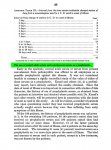The 1934 Los Angeles and California Epidemic
It is generally believed that the first scientifically documented incidence of Epidemic Myalgic Encephalomyelitis occurred in a mixed large epidemic of paralytic poliomyelitis in California in 1934 and Myalgic Encephalomyelitis. However, as a polio epidemic it was unusual in several ways but particularly in the low rate of paralysis and deaths. In the few autopsy cases, damage to the anterior horn cells and the vascular system were noted. Poliovirus was recovered in autopsy material and transferred to monkeys, which in turn were paralyzed. But many, possibly a majority of the cases, were more consistent with Myalgic Encephalomyelitis.
It is estimated that approximately 100,000 patients fell ill from San Francisco to San Diego, a major city just above the Mexican border. What ever this epidemic was created both panic in the public and a controversy in the medical community that remains today. Convalescent Serum: The first failed polio immunization: Medical publication interest however centred around the staff of the Los Angeles County General Hospital when 192 physicians and hospital health care workers fell ill following an immunization of what was thought to have been an injection of sterile immune convalescent serum taken from what was believed to have been recovered polio patients. It was never resolved whether their illness was caused by the immunization or contact with the thousands of patients who appeared at the doors of the hospital in 1934.
Battle lines drew up in the medical community with some physicians such as Gilliam, insisting it was a form of polio. The small group of physicians sent from Yale, thought otherwise, and although it is not said in words, if you read their correspondence, one obtains the opinion that the men from Yale felt this epidemic was a joke and was more likely hysteria. However, the patients did not get better. What is the likely truth? The California – Los Angeles epidemic was probably a typical mixed paralytic poliomyelitis / Myalgic Encephalomyelitis epidemic What we do know is that James P. Leake, Medical Director of the United States Public Health Service tried to prevent publication of Alexander Gilliam’s report on this epidemic. (A. Gilliam related this to Dr. A. Shelokov Sr., then, Shelokov was the foremost M.E. authority in the United States.)
The County of Los Angeles Authorities and the insurance industry did their best to prevent any settlement of the claim for damages. 12 However, by Gilliam removing certain unknown items from the report, and by threatening to go public if the report was not published, it was eventually published in 1938 in its revised form as Public Health Bulletin No. 240. Nevertheless, the battle continued in the courts until in 1938, four years after the epidemic, the 192 injured hospital staff, received a financial settlement sufficient for each to have purchased two significant houses in Hollywood California. (This is equivalent to several million dollars each.) The 192 staff members were also obliged to not discuss this settlement with anyone. However, when neurologist, Dr. Alberto Marinacci took over the care of these L.A. Hospital patients, and some of the patients did discuss the settlement with him.
Years after Dr. Marinacci retired, he invited me to come to see him at his home in Santa Monica, where I met his colleague who had continued to attend these patients and it was then I examined two of the remaining hospital patients. It was very obvious, 55 years later in 1989; these patients were still disabled with classical chronic Myalgic Encephalomyelitis. In the Public Health Bulletin 240, Gilliam labelled the report as, an Epidemic, diagnosed as Poliomyelitis. Dr Leake however states, “the absence of typical histories of poliomyelitis is striking”. So began the fight against Myalgic Encephalomyelitis.
One logical conclusion is the 1934 epidemic was a mixed epidemic of Paralytic Poliomyelitis and Myalgic Encephalomyelitis. This was the later view of Dr. Gilliam when he discussed the 1934 epidemic with Dr Shelokov. They both presumed it was a mixed epidemic. Neither knew of a previous similar reported epidemic.


